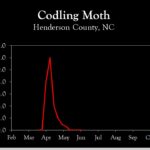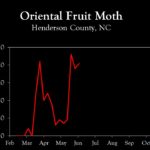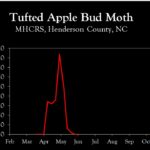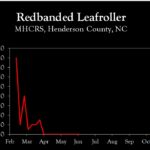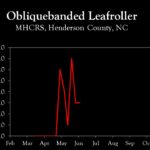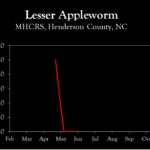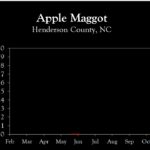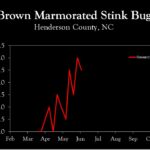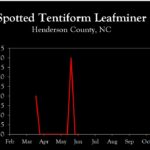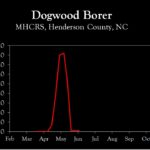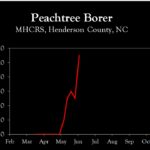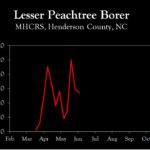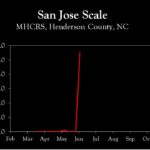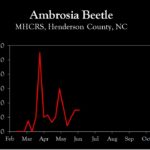WNC Orchard Insect Pest Populations – June 28, 2022
go.ncsu.edu/readext?872081
en Español / em Português
El inglés es el idioma de control de esta página. En la medida en que haya algún conflicto entre la traducción al inglés y la traducción, el inglés prevalece.
Al hacer clic en el enlace de traducción se activa un servicio de traducción gratuito para convertir la página al español. Al igual que con cualquier traducción por Internet, la conversión no es sensible al contexto y puede que no traduzca el texto en su significado original. NC State Extension no garantiza la exactitud del texto traducido. Por favor, tenga en cuenta que algunas aplicaciones y/o servicios pueden no funcionar como se espera cuando se traducen.
Português
Inglês é o idioma de controle desta página. Na medida que haja algum conflito entre o texto original em Inglês e a tradução, o Inglês prevalece.
Ao clicar no link de tradução, um serviço gratuito de tradução será ativado para converter a página para o Português. Como em qualquer tradução pela internet, a conversão não é sensivel ao contexto e pode não ocorrer a tradução para o significado orginal. O serviço de Extensão da Carolina do Norte (NC State Extension) não garante a exatidão do texto traduzido. Por favor, observe que algumas funções ou serviços podem não funcionar como esperado após a tradução.
English
English is the controlling language of this page. To the extent there is any conflict between the English text and the translation, English controls.
Clicking on the translation link activates a free translation service to convert the page to Spanish. As with any Internet translation, the conversion is not context-sensitive and may not translate the text to its original meaning. NC State Extension does not guarantee the accuracy of the translated text. Please note that some applications and/or services may not function as expected when translated.
Collapse ▲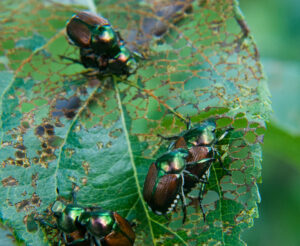 There are several groups of insect pests that are potential threats to apples, but with a few exceptions overall insect pressure remains relatively low across the region. Depending on location, codling moth and oriental fruit moth can be a concern. Among indirect pests, aphids, leafhoppers, mites and Japanese beetles are all active at this time.
There are several groups of insect pests that are potential threats to apples, but with a few exceptions overall insect pressure remains relatively low across the region. Depending on location, codling moth and oriental fruit moth can be a concern. Among indirect pests, aphids, leafhoppers, mites and Japanese beetles are all active at this time.
Codling moth degree day accumulations range from 1127 DD to 1437 DD in Henderson and Cleveland Counties, respectively. In Cleveland County and similar elevations, second generation egg hatch is about 10% complete and will be about 30% complete next week, so now is an important time to monitor trap captures and apply insecticides if warranted. In Henderson County, it is expected to be another 7 to 10 days before flight activity picks up. Chemical control is necessary in orchards with pheromone trap captures increasing above about 5 moths/trap/week. Insecticidal control is usually not necessary in orchards using mating disruption. Overall, codling moth populations have been low throughout the region this year.
Oriental fruit moth is in the midst of second generation flight in Henderson County, and while overall populations have been low, moth activity has been relatively high in a couple of orchards. So again, pheromone traps are valuable tools for assessing the need for chemical control.
Green aphid and potato leafhopper populations have been quite low this year, even in orchards not sprayed with aphicides in recent weeks. Japanese beetle populations have increased considerably over the past 10-14 days. Drought conditions are known to reduce survival of Japanese beetle larvae in the soil, so with increasing chances of rainfall over the next week or so, expect to see higher numbers. Populations should be closely monitored on young trees where new shoot growth is most important.
Learn more about southeastern apple insect pests at the Apple Insect Management page.
2022 Average Weekly Trap Captures
| HENDERSON COUNTY | |||
| Insects per trap | |||
| Jun 13 | Jun 20 | Jun 27 | |
| Codling moth | 0.0 | 0.0 | 0.0 |
| Oriental fruit moth | 23.0 | 19.0 | 20.5 |
| Tufted apple bud moth | 1.0 | 0.0 | 0.0 |
| Redbanded leafroller | 0.0 | 0.0 | 0.0 |
| Obliquebanded leafroller | 7.0 | 3.0 | 3.0 |
| Lesser appleworm | 0.0 | 0.0 | 0.0 |
| Apple maggot (abandoned and research orchards) | 0.0 | 0.0 | 0.0 |
| Brown marmorated stink bug (commercial) | – | – | 3.1 |
| Brown marmorated stink bug (unsprayed) | 1.5 | 3.0 | 2.5 |
| Spotted tentiform leafminer | 4.0 | 0.0 | 0.0 |
| Dogwood borer | 1.0 | 1.0 | 1.0 |
| Peachtree borer | 5.0 | 5.0 | 11.0 |
| Lesser peachtree borer | 14.0 | 30.0 | 27.0 |
| San Jose scale | 0.0 | 0.0 | 27.5 |
| Ambrosia beetle (all species) | 0.8 | 3.0 | 3.0 |
*Note that these averages illustrate only the timing of insect emergence and fluctuations in populations, and are not representative of population levels in any given orchard. The only way to have an accurate assessment of an individual orchard’s populations is to set up traps in that orchard.
2022 Accumulated Degree Days
| HENDERSON COUNTY | ||||
| Jun 13 | Jun 20 | Jun 27 | ||
| Codling moth (Biofix: April 22) | 800 | 974 | 1126 | |
| Oriental fruit moth (Biofix: April 12) | 1162 | 1359 | 1541 | |
| Tufted apple bud moth (Biofix: April 27) | 964 | 1161 | 1343 | |



